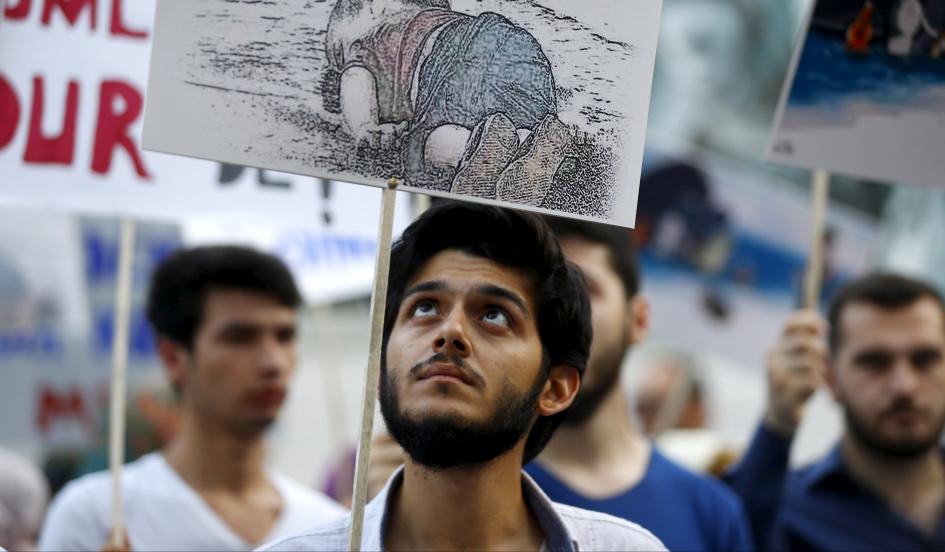Since the 2011 Arab Spring, the situation in Syria has accelerated from bad, to worse, to unthinkable. Torn apart by civil war and dictatorship, gassed by its own government and with more and more refugees drowning in the Mediterranean Ocean or suffocating in lorries in attempts to reach safety, it would seem almost impossible to believe that sympathy would be a difficult emotion to conjure up.
However, with David Cameron’s announcement in September that Britain will accept only 20,000 refugees over the next five years, and with inaccurate statistics linking refugees to crime and antisocial behavior, it would seem that a more exclusive and less humanitarian approach to the Syrian crisis is being encouraged. Much of the media coverage equally encourages hostility over the crisis, with The Daily Mail running the headline ‘The ‘Swarm’ On Our Streets’ on their front page in July, a reference to David Cameron’s dehumanizing language regarding people travelling through the Eurotunnel. Equally, the media coverage even sparked debate as to the difference between ‘refugee’ and ‘migrant’, the use of ‘migrant’ suggesting that the situation in Syria was not life threatening, but simply inconvenient as a migrant by definition does not leave their country due to life-threatening circumstances.
Nevertheless, it would seem that through the use of art and literature as well as social media, the dehumanization of the Syrian crisis is slowly being combatted.
Most famous was the artistic response to the photos published of Alan Kurdi, a three-year-old boy whose drowned body was washed up on a Turkish beach after he died with his mother and brother. The powerful image went viral and became an emblem of the crisis, showing how the image of one victim can at times be more powerful than floods of numbers and statistics. In response to this, illustrators from around the world recreated the image to promote help for refugees in need of help. Islam Gawish was one of the artists to draw upon the image, depicting Alan with angel wings and the word ‘Syria’ written in blood red. Speaking to CNN, he commented, “this child who wanted freedom, has been killed by the fear of war, the war that he was not a part of”. His art and the art of others all led to a viral response of Facebook and Twitter with #humanitywashedashore trending, all increasing pressure for European leaders to respond with more compassion.
This summer marked a heightened awareness of the Syrian crisis, when Europe experienced the highest recorded arrival of refugees since the Second World War. The artistic response gained momentum, with exhibitions such as Syria: Third Space funded by the British Council and put on in Belgium in the Government Building from the 1st to the 5th of July. The exhibition showed images of displacement through photography, conveying the much-lost sense of individual stories and people caught up. The exhibition was created through 78 Syrian artists being funded with small grants across over 10 countries, whose lives have been forever changed. The image from the exhibition that gained most attention was by Mohamad Khayata entitled Stitching my Syria Back, and shows a man and his guitar reclining on a pile of plastic bottles, his guitar seeming to be the only thing that remains of his former life. As well as the loss of lives, this artwork and many others helps to demonstrate the grief of losing your home.
As well as the powerful photographic exhibition, this year has also seen a powerful response from the more conceptual instillation art. In March of this year the Red Cross teamed up with Syrian artist Ibrahim Fakhri to make an instillation artwork entitled No-one Home at The Old Truman Brewery in Shoreditch, which is created by leaving a milk bottle on the floor for each day the Syrian conflict continues. As the work is soon to enter its fifth year and with over 1,400 bottles having been placed, the image conjures up a strong sense of abandonment and desertion, as people leave Syria and are then deserted by the international community.
Literature as well as art is contributing to the changing identity of the Syrian refugee crisis. While it is easy to become desensitized by facts and numbers, the poem Home by Somali-British poet Warsan Shire has become something of a motto, with the line ‘you have to understand, no one puts their children in a boat unless the water is safer than the land’ drawing to mind the images of the overcrowded boats flocking to Greece in seek of refuge. The poem explores what it is to be a refugee, and the grievous factors that force you to leave your own home. The viral nature of this line has been used in protests, magazines and even by celebrities, with actor Benedict Cumberbatch reciting the poem to the audience along with a plea for empathy after his performance of Halmet at the Barbican in the hope to encourage the audience to donate to the Red Cross which were at the Barbican fundraising.
The use of art and literature to appeal for humanitarian actions is not new. However it is effectively combatting the stigmatization and exclusion that underlies much of the thinking around the Syrian crisis.
As people continue to be both moved and informed by the new wave of art works made in the light of tragedy and politics, we can only hope that the long-term effects of this are beneficial humanitarian changes and an end to media and politically-fuelled stigma.
Sasha Khan

